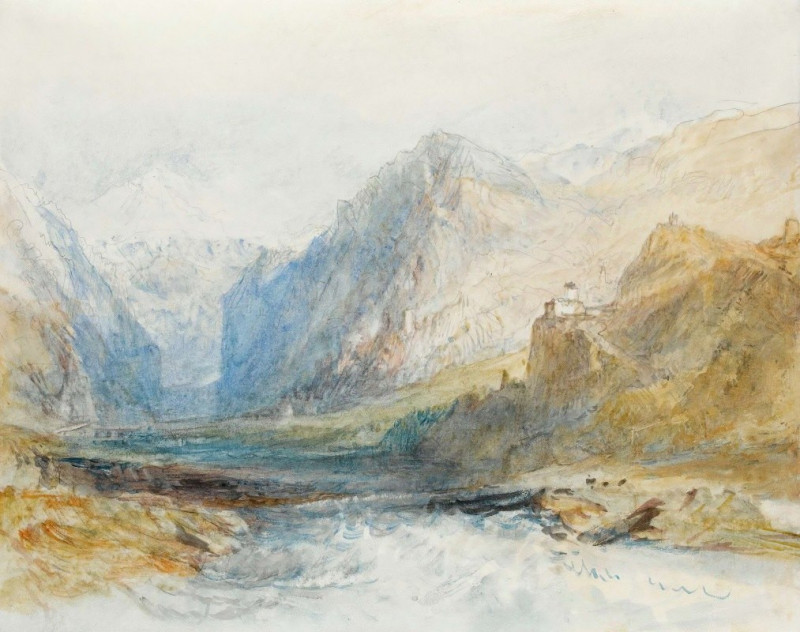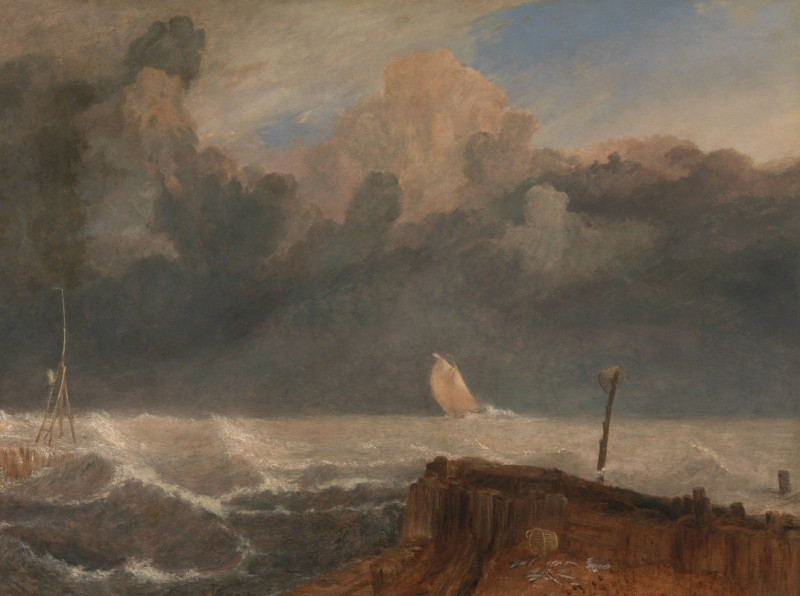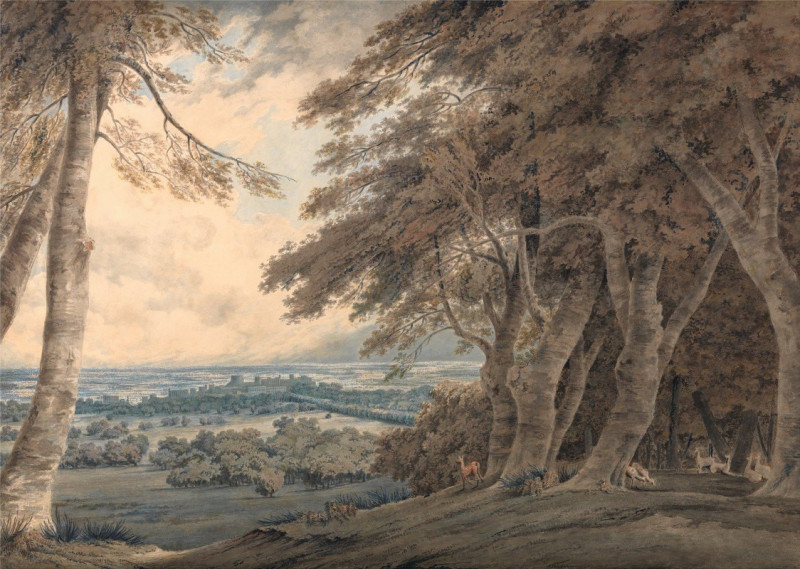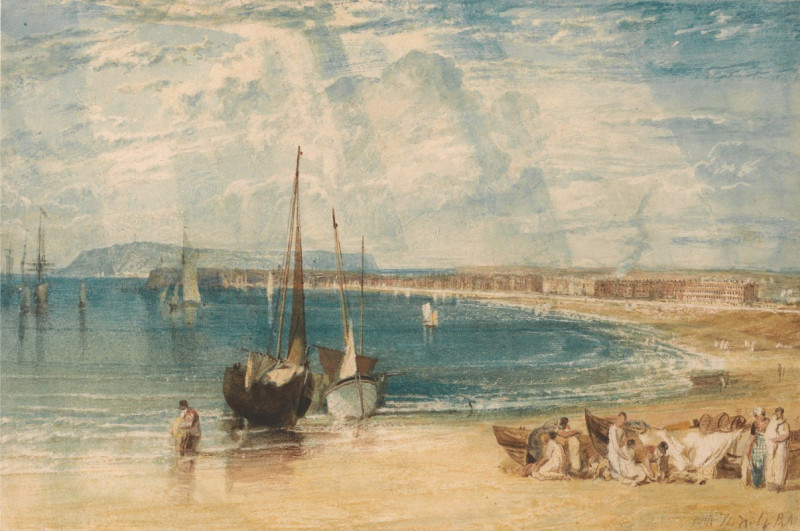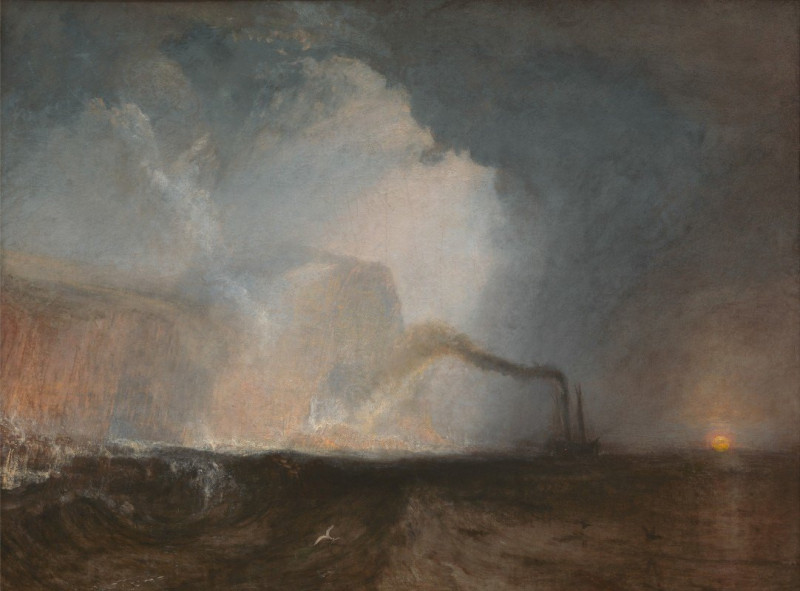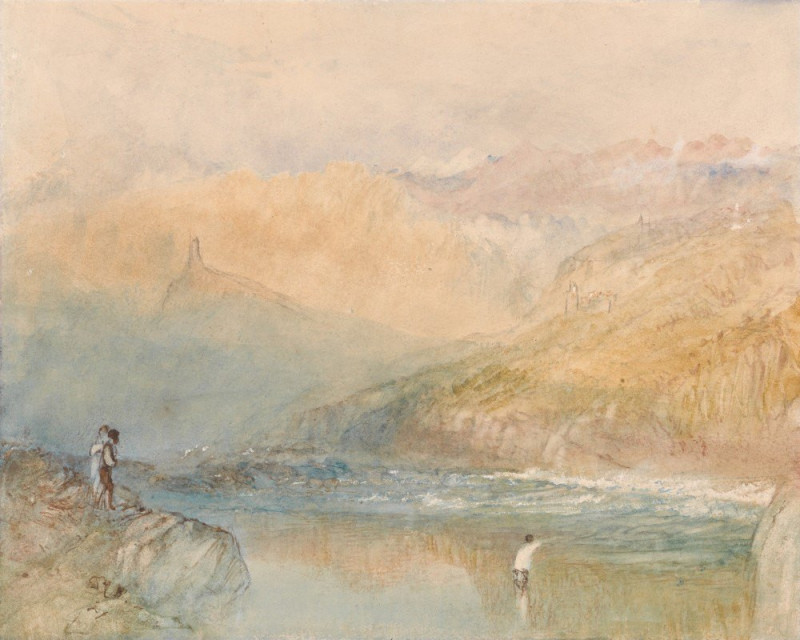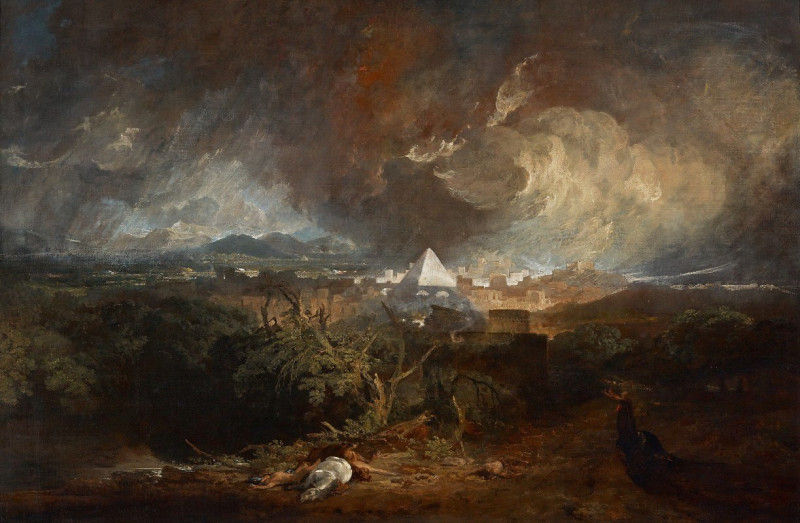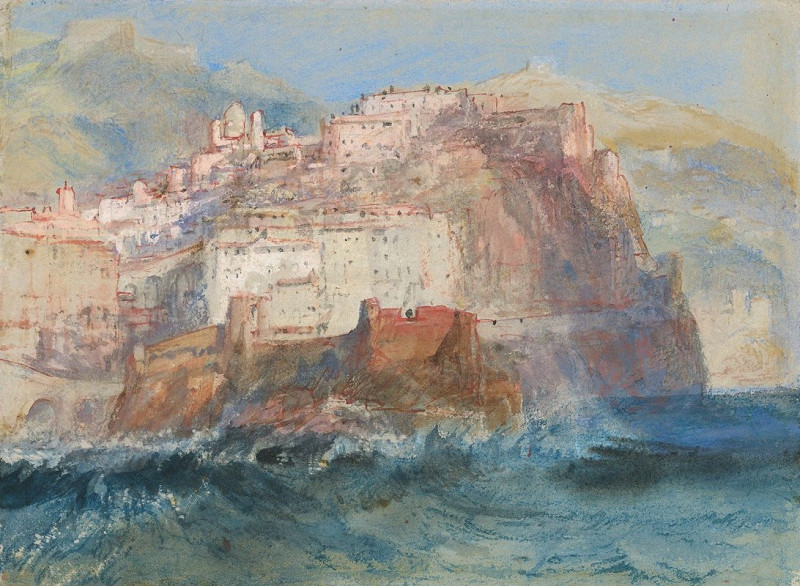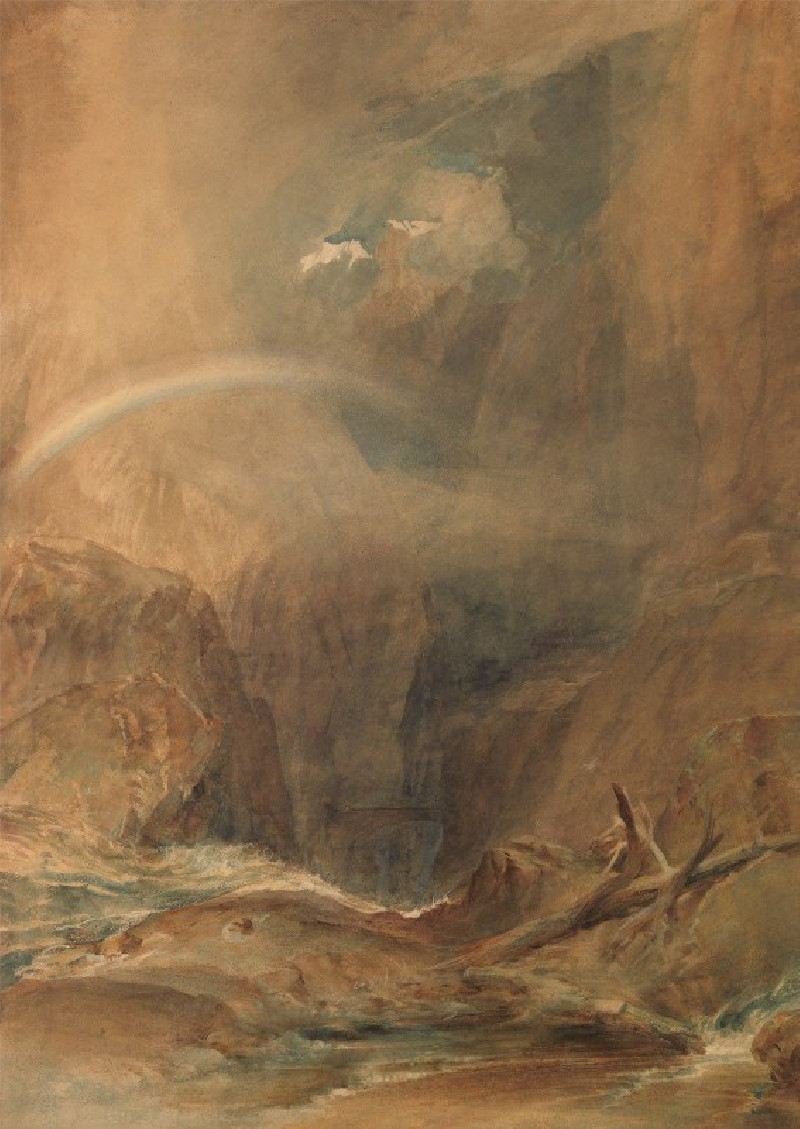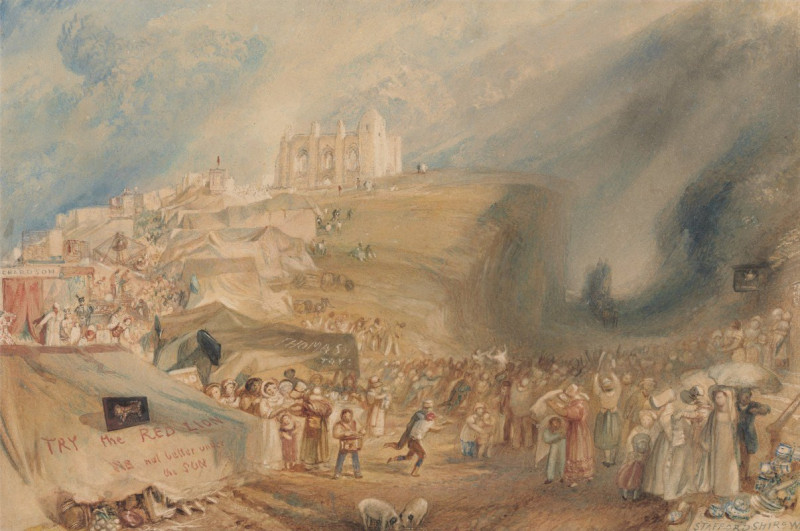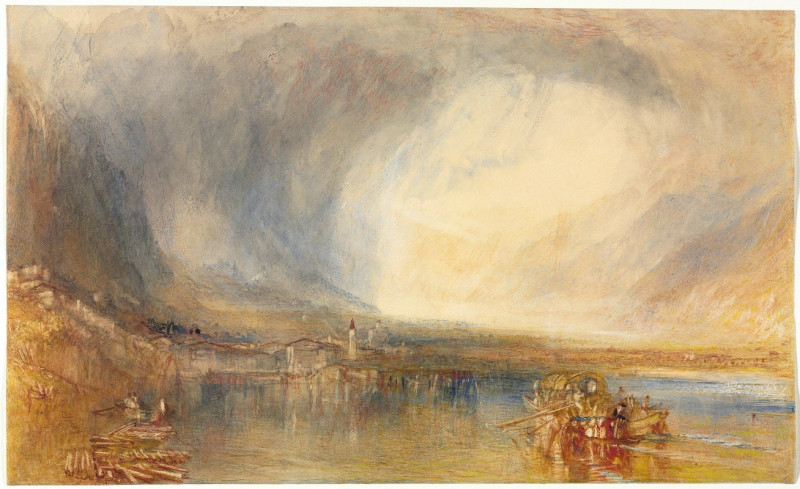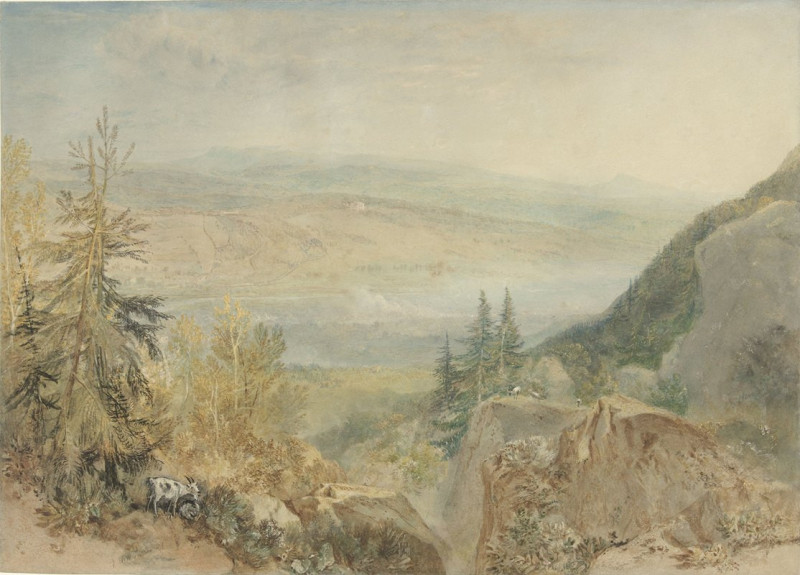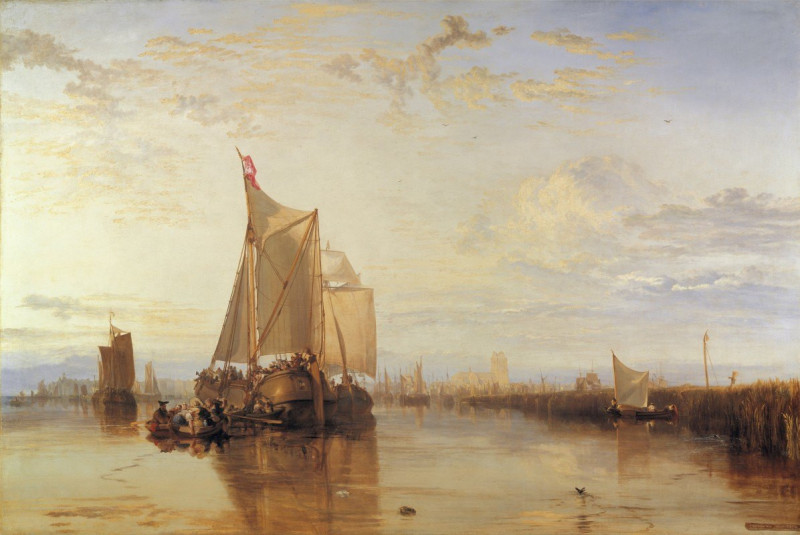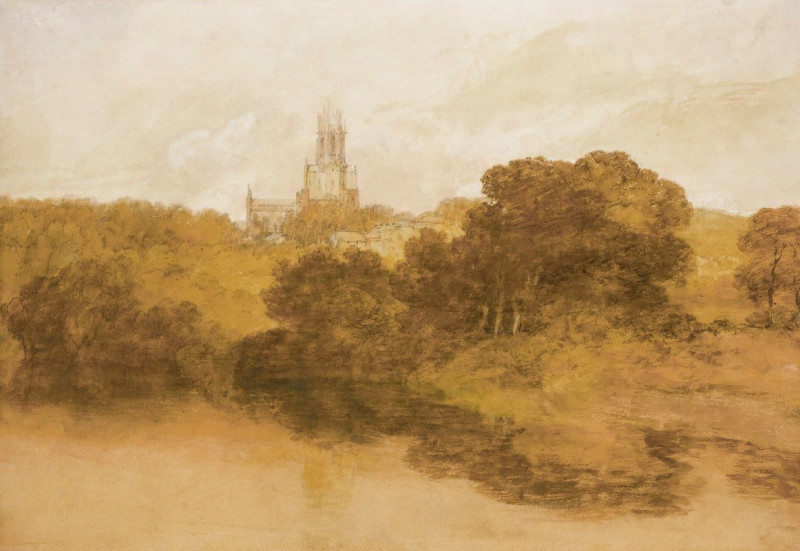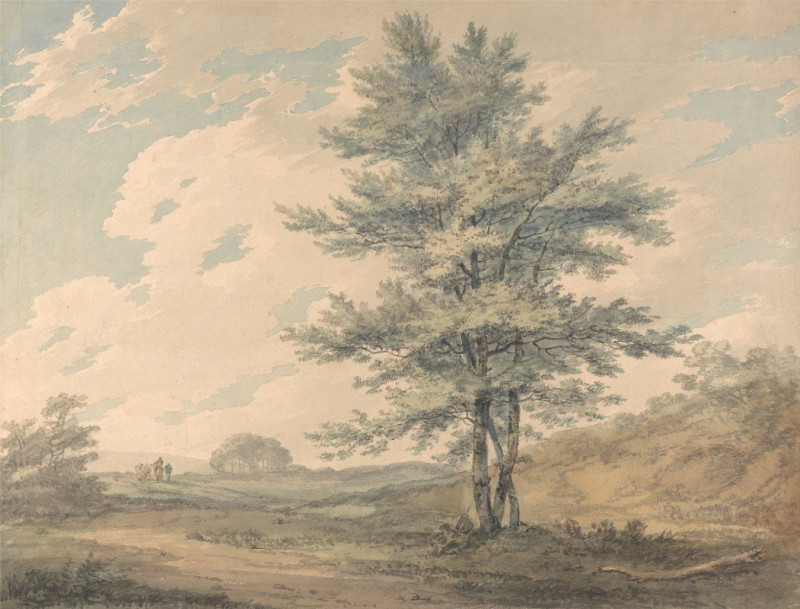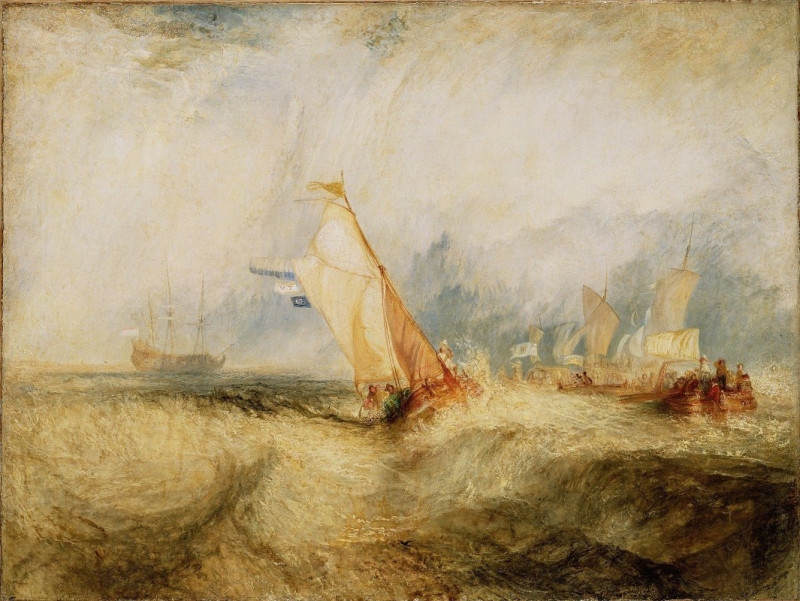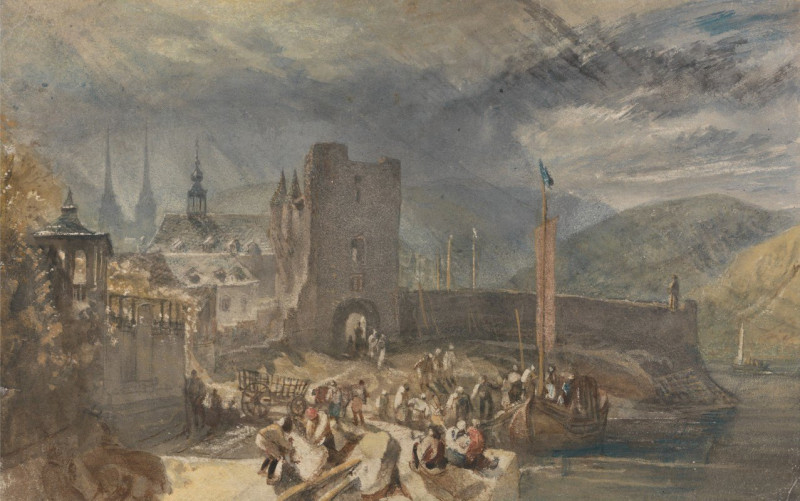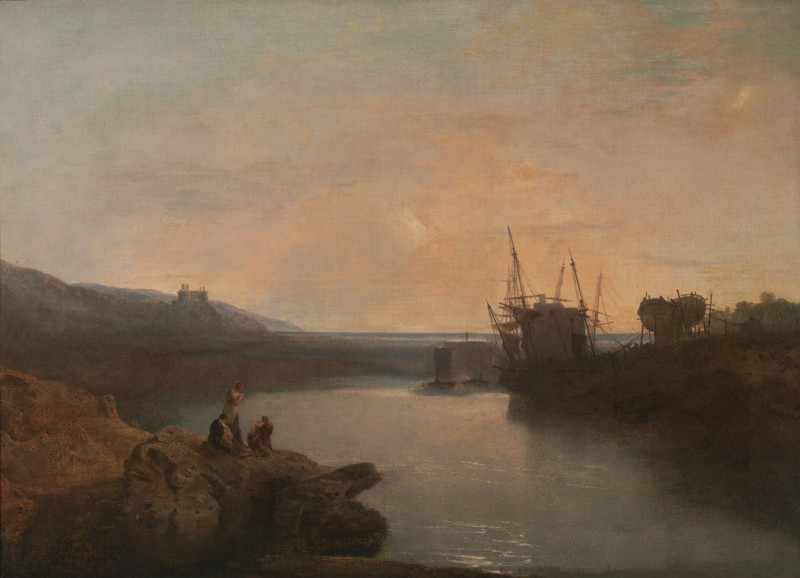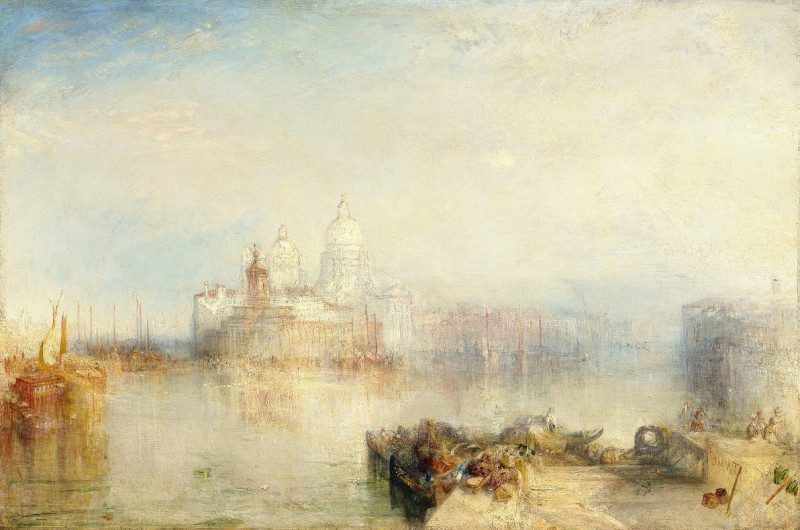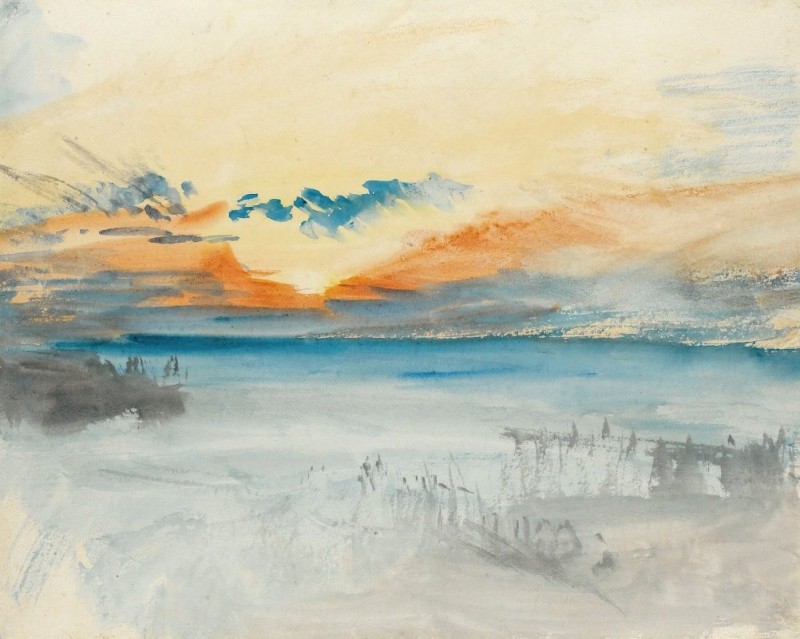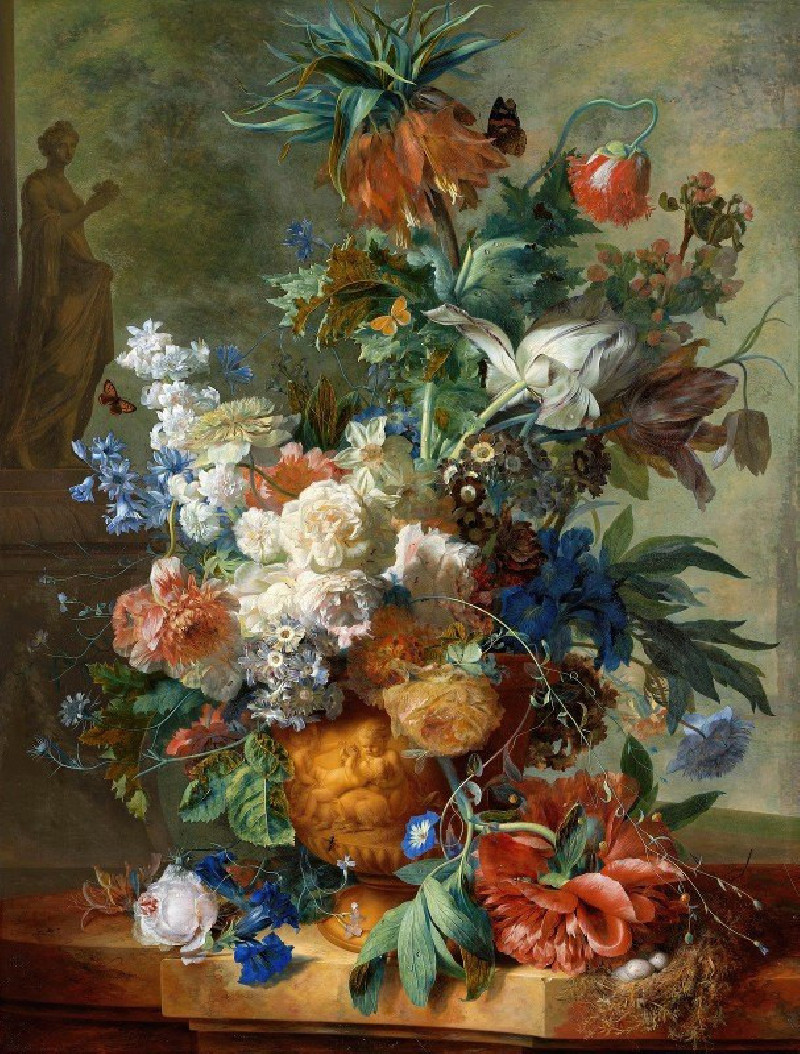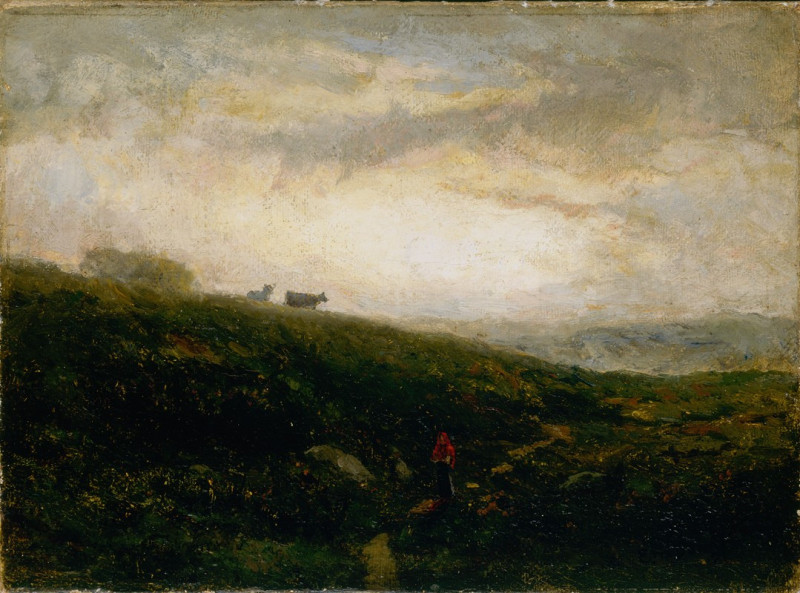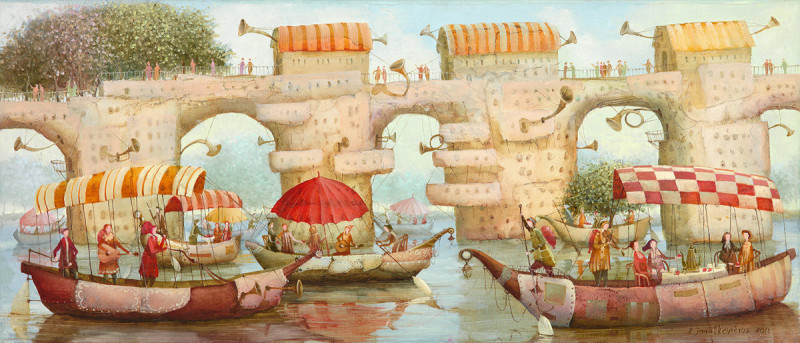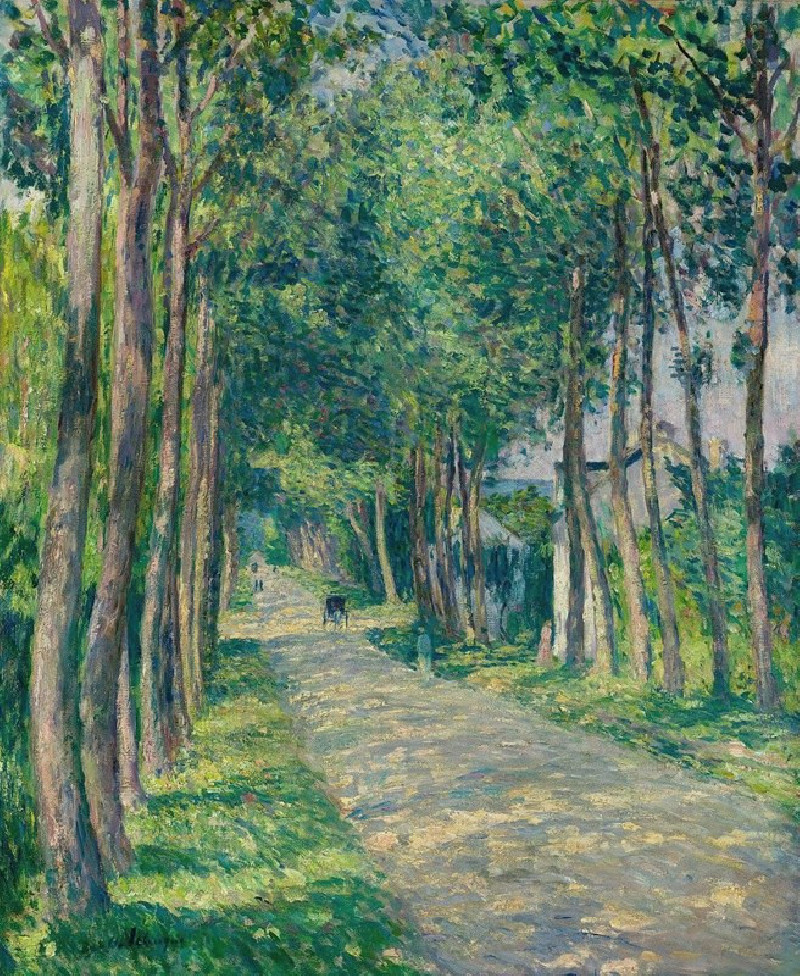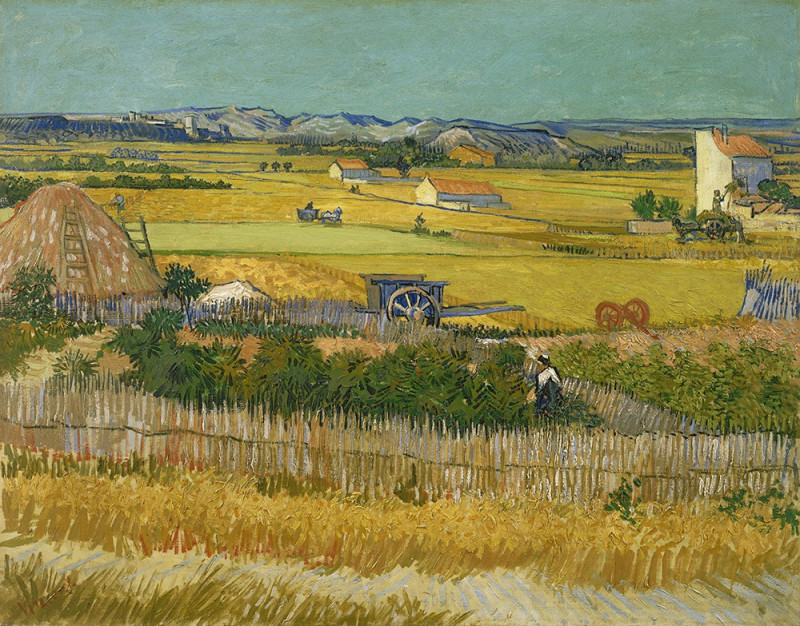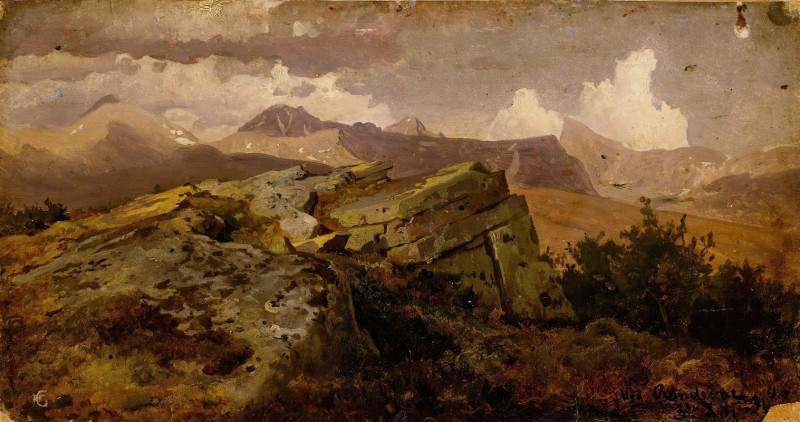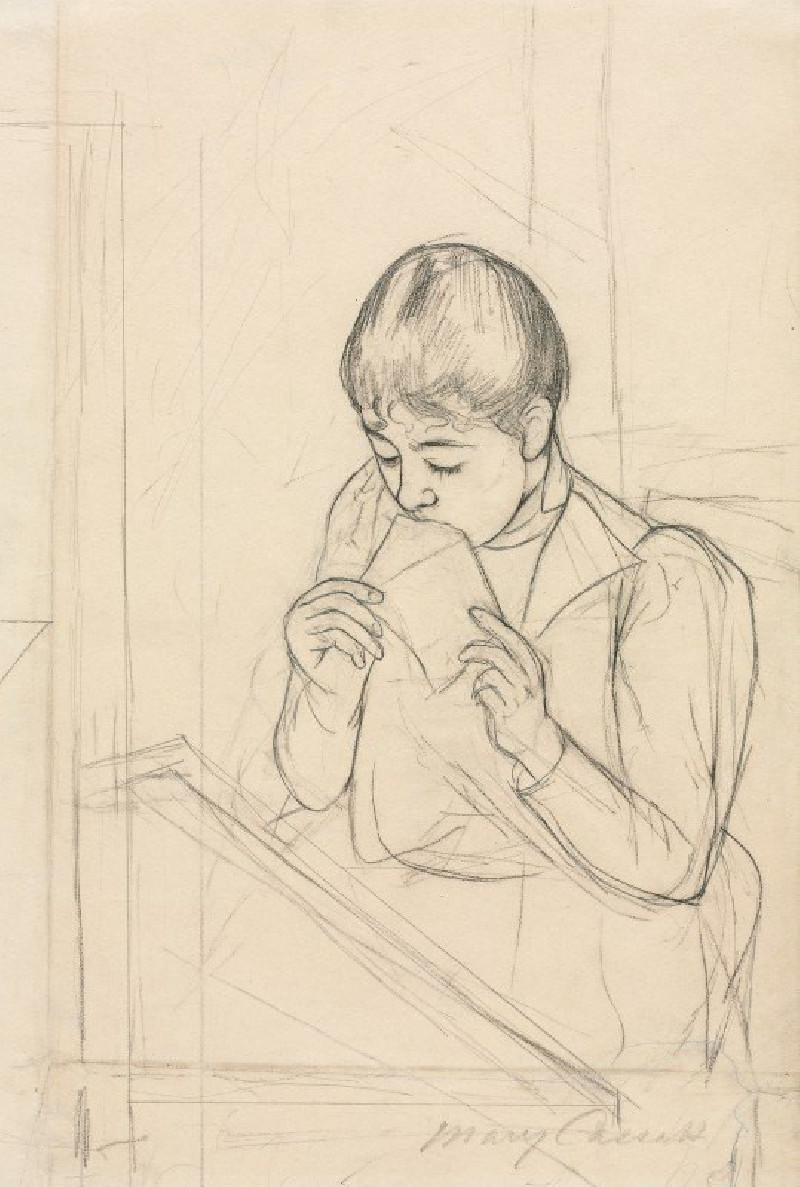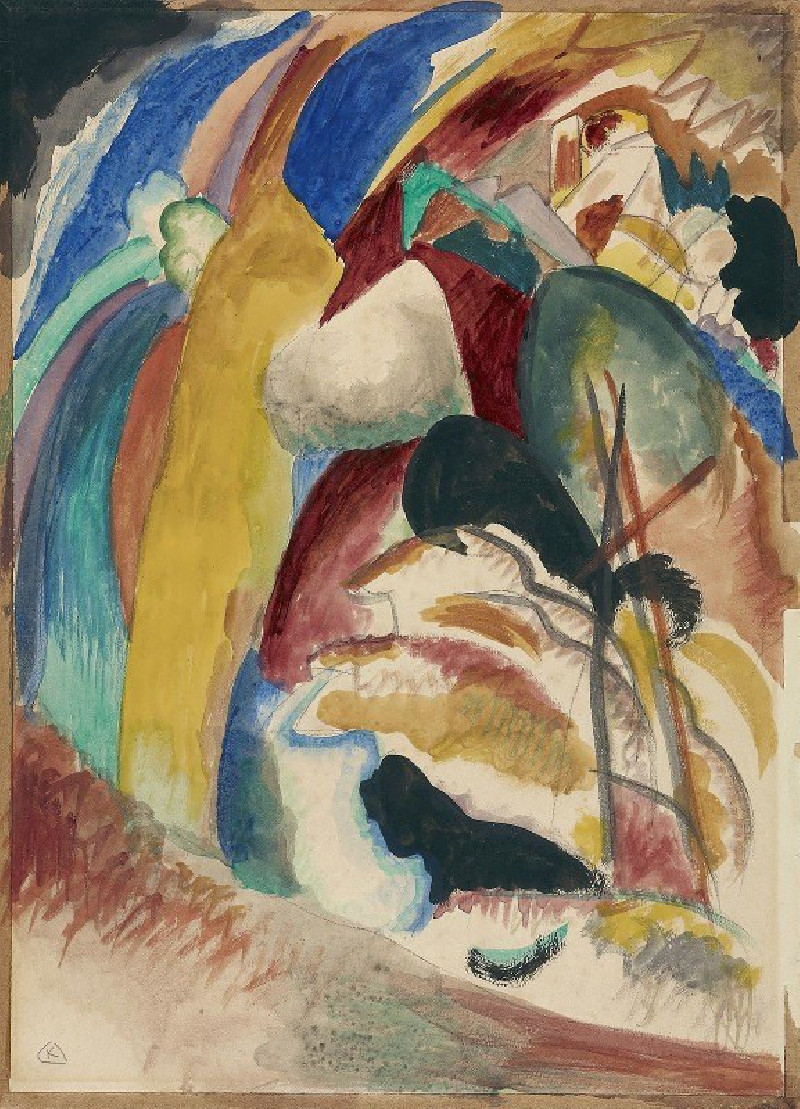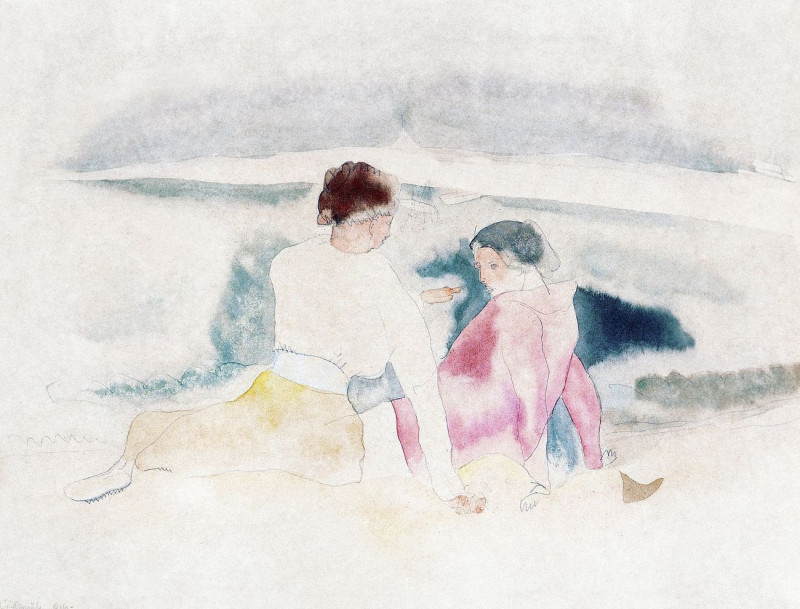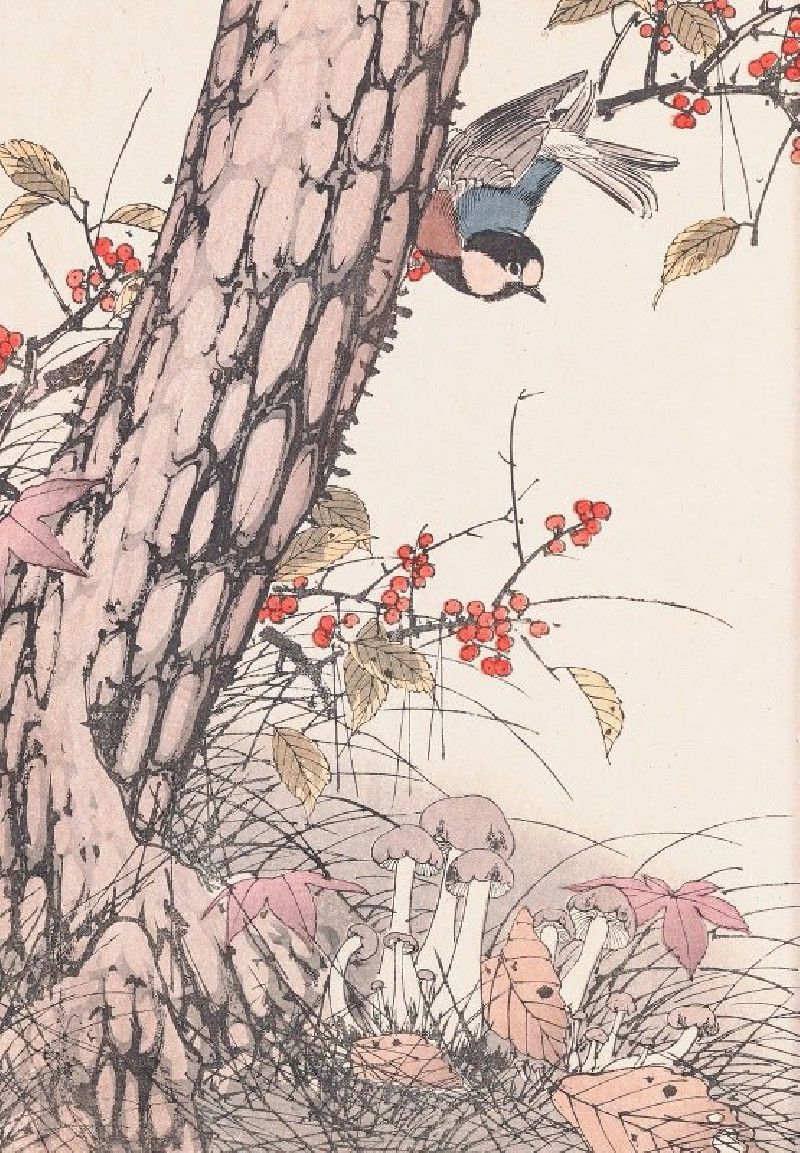The Domleschg Valley, Looking North To The Gorge At Rothenbrünnen (1840)
Technique: Giclée quality print
Recommended by our customers
More about this artwork
Delve into the breathtaking landscape of "The Domleschg Valley, Looking North To The Gorge At Rothenbrünnen," a stunning masterpiece by the eminent Romantic artist, Joseph Mallord William Turner. Created in 1840, this painting embodies Turner’s distinctive ability to capture the raw beauty and dynamic atmosphere of natural scenes.In this tranquil yet dramatic watercolor, Turner portrays the sweeping expanse of the Domleschg Valley, a region known for its rich history and rugged terrain. The viewer’s eye is drawn into the scene through the gorge that cuts deeply through the surrounding mountains, leading towards a distant, serene horizon. These towering mountains, rendered in soft hues, encase the valley, their craggy outlines suggesting both the impermanence and eternity of nature.Foregrounding the composition, Turner depicts a vivid and turbulent river, its waters cascading energetically over rocks. The river adds an element of vitality and movement, contrasting with the stillness of the lofty peaks. On the precipices, ancient structures cling to the cliffs, possibly old ruins or fortresses, which echo the long human history intertwined with this natural landscape.Turner's use of light and color is subtle yet impactful. The ethereal blues and misty grays suggest a damp, fresh atmosphere, possibly the early hints of morning or the residue of a passing storm. This atmospheric quality not only draws the viewer deeper into the landscape but also evokes emotional responses to the overwhelming beauty and isolation of the scene.This painting is not just a geographical depiction but a poetic interpretation.
Delivery
Returns
Joseph Mallord William Turner RA, known in his time as William Turner, was an English Romantic painter, printmaker and watercolourist. He is known for his expressive colourisations, imaginative landscapes and turbulent, often violent marine paintings. He left behind more than 550 oil paintings, 2,000 watercolours, and 30,000 works on paper. He was championed by the leading English art critic John Ruskin from 1840, and is today regarded as having elevated landscape painting to an eminence rivalling history painting.

